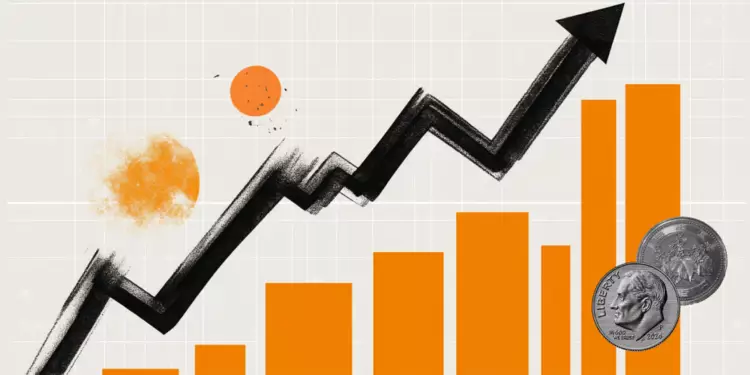In the current economic landscape riddled with uncertainties, the Japanese Yen (JPY) is asserting itself as a formidable safe-haven currency. As global trade tensions simmer and unease pervades the markets, investors are increasingly turning to the Yen for stability. This shift stems from a complex interplay of factors that not only bolster the Yen’s position against the US Dollar (USD) but also highlight the evolving dynamics of international trade relations.
Trade wars often create a ripple effect that influences market sentiment, and right now, the prospect of a trade deal between the US and Japan is igniting optimism. The notion that resolutions could be on the horizon infuses traders with a cautious sense of hope, stabilizing the Yen in the face of adversity. Concurrently, the Bank of Japan’s (BoJ) signals about interest rate hikes further validate the currency’s appeal. Historically, as interest rates rise, so does the attractiveness of the currency, given the potential for greater returns on investments.
Economic Indicators Point to Strength
Recent economic data has painted a favorable portrait for Japan, especially in the context of its core machinery orders, which surged by 4.3% in February. The data exceeded market expectations and marks the most robust growth in a year, suggesting that Japan’s industrial sector is gaining momentum. Pivotal factors contributing to this resurgence include increased business confidence and an uptick in capital investment, which in turn heralds greater employment opportunities.
This uptick in Japan’s economic activity stands in stark contrast to the pressures weighing on the US economy, where concerns over President Donald Trump’s erratic trade policies loom large. As tariffs fluctuate and exclusions are granted, investors are left reeling, which indirectly boosts the Yen. The juxtaposition of Japan’s recovering economic figures against the backdrop of murky US trade policies underpins the Yen’s resilience.
Interest Rate Expectations and the Yen’s Advantage
The divergence between the monetary policies of the Bank of Japan and the Federal Reserve adds another layer of complexity to the USD/JPY exchange rate. The Fed’s cautious approach, with increasing speculation around cutting rates further, creates a dampening effect on the USD. In contrast, the BoJ’s renewed commitments to possibly raising interest rates in the near future generate favorable conditions for the Yen.
This contrasts sharply with expectations for additional easing in US monetary policy, creating a narrowing interest rate differential that often favors lower-yielding currencies like the Yen when global market anxiety spikes. As interest rates are a vital component in currency strength, the prospect of the BoJ tightening its monetary policy signals greater investment stability in Japan compared to the US.
Technical Outlook for USD/JPY
Technical analysis of the USD/JPY pair suggests a continuation of its downward trend, primarily influenced by the external factors previously discussed. The lack of solid buying interest indicates that the currency pair may not be able to break the prevailing bearish sentiment soon. Recent oscillators reflect a concerning position in negative territory, further solidifying the likelihood of a downward trajectory.
As the pair hovers near historical lows, traders are keenly observing potential support levels around the 142.25 region. Conversely, the resistance levels around the 143.60 area may act as a crucial pivot point for any recovery attempts. However, any potential upward movement beyond this threshold is likely to encounter stiff resistance, marking significant hurdles that the USD must overcome before any bullish rally can materialize.
The Broader Implications of Japan’s Economic Policy on Global Markets
The implications of Japan’s economic policy extend beyond its borders, affecting global investors’ sentiment and strategies. The BoJ’s stance of gradually unwinding its ultra-loose monetary policy reflects a shift towards mitigating currency depreciation risks. This policy change is not merely a domestic affair; as Japan embarks on this path, it marginally begins to realign its position relative to other major economies, particularly the US, signaling a wider trend in global financial markets.
Moreover, the systemic risk associated with erratic market behaviors, fueled by geopolitical tensions and policy changes, can lead investors to flock to the Yen as a bastion of reliability. This switch in sentiment catalyzes opportunities for those trading in currencies, emphasizing adaptive strategies in an increasingly volatile environment. As the global economic landscape evolves, Japan’s ability to navigate these challenges will undoubtedly shape the future dynamics of its currency.
As the JPY continues to demonstrate resilience against the backdrop of a tumultuous international economic climate, it offers a compelling case study in the complexities of currency movements and investor psychology. The current economic landscape serves as a reminder that, in times of uncertainty, traditional safe havens like the Yen can resurface to provide a stabilizing force, assuring investors seeking refuge during turbulent times.

